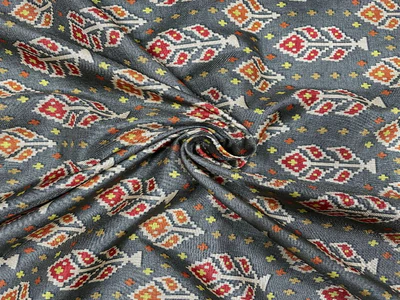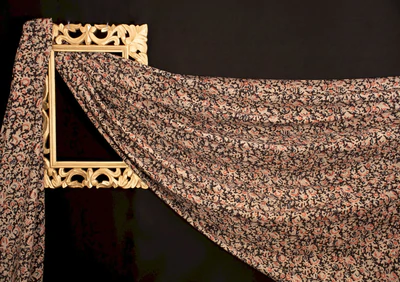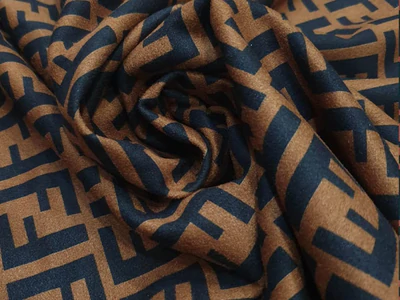
COTTON : THE GODFATHER OF ALL FABRICS
Cotton is the staple fabric present in every person’s home. It is one of the most essential fabrics and is used to make clothes, furniture, accessories and is even mixed with many other fabrics to create new fabrics. Cotton is also one of the oldest fabrics as it dates back to the fifth millennium B.C. It is obtained from the cotton plant and it can be plain, dyed or be a pattern. Cotton is that part of the cotton plant that is white and fluffy, it is picked out and is later woven to create a soft but extremely strong and durable fabric. Cotton is also very easy to buy when shopping for fabric online as one does not need to worry about the quality and almost everyone is familiar with the fabric.

What are different characteristics of cotton that make it so popular ?
Cotton has many different characteristics that make the fabric so unique and versatile, as well as the most popular fabric in the world. Those characteristics are :
- Breathability : This is by far the most sought after use of the cotton fabric. Places near the tropics or regions where it is generally hot, cotton can be seen worn by the majority of the people. It allows the wearer to protect themselves from the heat and dirt but still not suffocate to the heat being trapped inside like what happens with most synthetic fibers.
- Absorbency : Similar to the previous characteristic, the ability of cotton to absorb moisture makes it extremely popular in temperate climates. This is possible because the cotton fibers have a lot of space between them.
- Softness : The cotton plant itself is very soft and fluffy leading to the fabric retaining that quality and having a soft feel that does not irritate the skin. This quality makes it the perfect candidate for making underwear and to be used to cover furniture.
- Durability : For all the qualities that the cotton fabrics offer, they all would be put to waste if the cotton fabric wasn’t as durable as it is now. The cotton plant’s cellular structure is extremely strong, making the fabric one that is often resistant to tough conditions and even the most extreme wear and tear.
- Holds dye well : With cotton being the versatile fabric that it is , it would be a shame if it wasn’t available in a variety of different colors and patterns. Luckily for us this is not the case as this absorbent fabric dyes very easily and can be made into a variety of colors.
- No static cling : This fabric doesn’t conduct electricity. This is a big plus as no one wants a fabric no matter how many advantages it has , to shock its wearer every two minutes due to static electricity.

Different types of cotton
Cotton is farmed in a variety of different regions such as China, India, U.S , Uzbekistan, Pakistan, Turkey, etc. Each place also has its own method of processing and weaving the plant. This causes there to be four different categories that cotton fabrics can be divided into. They are:
- Pima cotton :
This is the cadillac of cotton fabrics as it is the most sought after fabric. These fabrics tend to be extremely soft and extremely long. It is the finest type of cotton in the world and is primarily grown in parts of south american and the American southwest. These fabrics are always in very high demand as they are resistant to tearing, fading, and wrinkling.
- Egyptian cotton :
Egyptian cotton is very similar to pima cotton, they even belong to the same scientific class. They are also sought after for their resistant qualities. The only difference between them and pima cotton is the places where they are grown, with this one being native to egypt grown along the river nile. The reason this is a different category is because of its extremely rich history , with wars being fought over it and it being used by many of the most famous Egyptian rulers in history.
- Upland cotton :
Upland cotton is made up of fibers that are extremely short and these fabrics make up almost 90% of the cotton available on the market today. This kind of cotton is native to Central America, Mexico , The southern Caribbean and Florida.
- Organic cotton:
This kind of cotton is any cotton plant grown without chemicals and from seeds that are not genetically modified or engineered.

How to care for your cotton fabrics:
Cotton is extremely easy to take care of and clean but the way they are cleaned vary depending on the color of the fabric as well as the blend of the fabric. Based on those things they can be machine-washed or dry cleaned .
- The first step to taking care of any cotton fabric is to always check the label for the washing instructions.
- Always pre-treat the stains before washing
- Wash similar colors together to prevent any transfer of colors. The common saying of washing white and coloured separately when it comes to clothes definitely applies here.
- Darker colors should also be washed in cold water and lighter ones in warm water. This helps the fabric retain its vibrance.
- Bleach if need can be used on cotton but keep in mind the color quality of the fabric as coloured fabrics of a lower quality can be bleached out very easily and give a faded and dull look
- Cotton tends to shrink over time or after a few washes. Keep that in mind when making or buying cotton clothes.
- Cotton can be dried in any way you want but most cotton fabric shrink and wrinkle easily. To avoid this don't dry them for a long period of time.
- Keeping cotton fabrics underwater or soaked for a long while after you have worn them causes a weird smell to originate that takes a few washes to leave the fabric. This is because cotton is extremely absorbent and absorbs all the sweat , dirt and smell that might be released due to the prolonged soaking.

Now that you know the types, characteristics of cotton as well as how to properly care for them, hopefully you can make an informed decision when buying fabric online or offline.





